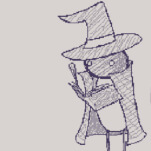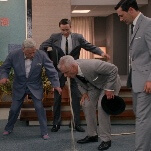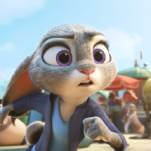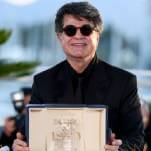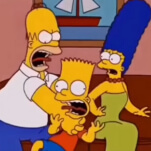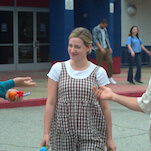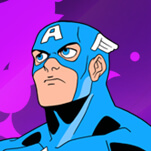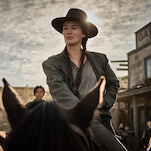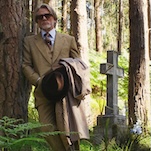Keane himself often pinpointed the moment that everything changed—a mid-’60s panel that featured middle son Jeffy emerging late at night in his pajamas, saying, “I don’t feel so good, I think I need a hug.” As Keane said, “And suddenly I got a lot mail from people about this dear little fella needing a hug, and I realized that there was something more than just getting a belly laugh every day." Indeed, some would argue that Keane never really cared about getting a belly laugh ever again: Over multiple decades, through all the shifts in social mores and increasingly sophisticated ideas about comedy, Keane made Family Circus even more cutesy and sentimental, saying explicitly that he believed it was his responsibility to act as a stalwart for traditional values.
As he once said while decrying the increasingly lax moral standards of movies, TV, and radio, “We are, in the comics, the last frontier of good, wholesome family humor and entertainment.” His commitment to defending that frontier was so great, in fact, that he didn’t even particularly care about being considered a “comic” strip, saying, “I would rather have the readers react with a warm smile, a tug at the heart or a lump in the throat as they recall doing the same things in their own families.”
Naturally, being so gooey and simplistically, unflappably square—even in a somewhat staid medium like the newspaper comics—made Keane and Family Circus a frequent target for ridicule. To Keane’s credit, he was always a pretty good sport about it. He frequently said he believed that such satire was a testament to the strip’s popularity, and was always game for being made fun of by his fellow cartoonists—like the time that Bill Griffith had Zippy The Pinhead wake up convinced that he was Jeffy, which Keane repaid by having Zippy appear in Family Circus. Or the time he swapped strips with Dilbert’s Scott Adams, or whenever he responded enthusiastically to being mocked in Stephan Patsis’ Pearls Before Swine, which he answered by providing a sarcastic intro to one of its collections. Keane even admitted to liking the user-submitted parody website The Dysfunctional Family Circus, which was just one of many examples of the now-common pastime of substituting Keane’s earnest dialogue with jokes about sex, drugs, child abuse, or even H.P. Lovecraft. (After that particular site got increasingly tawdry, however, Keane asked for it to be shut down.)
Keane was also a professed admirer of some of his more out-there colleagues like Far Side creator Gary Larson, and they in turn rewarded him time and again with mutual admiration (as well as actual awards, such as the National Cartoonists’ Society’s prestigious Silver T-Square). Not that you’d know it from reading Family Circus, of course, which proceeded along a very narrowly defined dotted line across the threshold of the millennium, its only notable dabbling in the world outside its safe little bubble being the introduction of mischievous gremlins Ida Know and Not Me—whose existence would seem to challenge the Christian theology Keane brought in during his preachier moments, but whatever.
That simplicity and consistency was Family Circus’ burden to its detractors, but as Keane often pointed out, it’s also the reason it remains one of the most lasting and widely read comic strips of all time. While Keane had been assisted by his son Jeff for many years now, it’s unclear at the moment whether Jeff will assume full production of the strip, but if he does, you can probably expect it to remain exactly, comfortingly the same. That’s all Bil Keane ever wanted.



